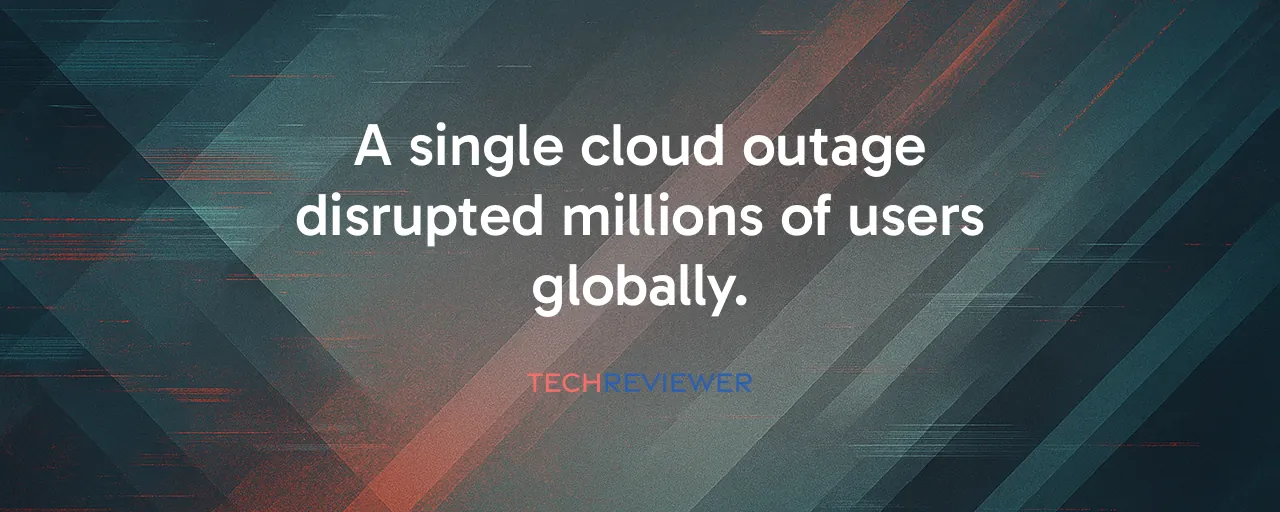A Digital House of Cards
When Amazon Web Services went dark for three hours on October 20, 2025, the internet stumbled. Over 4 million users felt the ripple effects as platforms like Snapchat, Roblox, and Coinbase ground to a halt. The culprit? A DNS glitch in AWS's DynamoDB service, centered in its US-EAST-1 region in northern Virginia. This single point of failure took down banking apps, gaming platforms, and even airline booking systems, exposing just how much of our digital world leans on a handful of cloud providers.
The outage hit hard because AWS powers roughly a third of the global cloud market. Its US-EAST-1 region, the oldest and most feature-packed, acts as a nerve center for countless services. When DNS resolution failed, applications couldn't connect to their databases, leaving users locked out. From Fortnite players to bank customers unable to access funds, the disruption showed how deeply cloud infrastructure weaves into daily life.
Lessons From the Front Lines
Not every company suffered equally. Take Netflix, a pioneer in chaos engineering. By routinely simulating failures, Netflix ensures its systems can limp along even when AWS falters. During the outage, their multi-region setup kept streaming largely intact, a testament to proactive resilience. Contrast that with Coinbase, where users couldn't trade or access funds for hours. Lacking robust failover systems, Coinbase faced a storm of user frustration and potential regulatory scrutiny, highlighting the cost of underinvestment in redundancy.
These cases reveal a stark truth: preparation separates the resilient from the vulnerable. Netflix's chaos engineering drills, which intentionally break systems to test recovery, paid off. Coinbase, reliant on a single region, learned a hard lesson about the risks of lean infrastructure. Regular testing and multi-cloud strategies, though costly, can make the difference between a blip and a catastrophe.
The Single-Cloud Gamble
Why do so many companies bet on a single cloud provider? Cost and simplicity. Building on one platform, like AWS, streamlines operations and leverages deep integration. Enterprise architects argue that using multiple availability zones within a provider can suffice for most failures. But the outage showed that regional issues, like the DNS failure in US-EAST-1, can bypass those safeguards, leaving even well-designed systems stranded.
On the flip side, multi-cloud advocates push for spreading workloads across providers like Microsoft Azure or Google Cloud. This approach promises independence from one vendor's failures but brings headaches: complex data sync, higher costs, and navigating different APIs. For smaller businesses, these barriers are daunting, locking them into single-provider setups despite the risks.
A Wake-Up Call for Regulation
The outage sparked renewed debate about treating cloud providers like public utilities. With AWS, Microsoft, and Google controlling nearly two-thirds of the cloud market, their failures ripple far beyond tech. Banking, travel, and government services in places like the UK stalled, raising questions about systemic risks. Policymakers in the EU and UK are exploring rules to enforce interoperability and transparency, aiming to reduce dependence on a few giants.
Yet regulation isn't a silver bullet. Critics warn that heavy-handed rules could stifle innovation or burden smaller providers. Others argue for public investment in alternative infrastructure, especially for critical government services like tax systems. The challenge lies in balancing oversight with the flexibility that fuels cloud growth.
Rethinking Our Digital Backbone
The AWS outage laid bare a deeper issue: our digital world rests on a fragile foundation. As cloud workloads grow by over 20% annually, the stakes climb higher. Businesses face pressure to invest in resilience, from chaos engineering to multi-cloud setups, but costs and complexity hold many back. Meanwhile, users expect constant access to everything from messaging apps to financial platforms, often unaware of the brittle infrastructure underneath.
Looking ahead, smarter tools like AI-driven failure detection and edge computing could ease the strain on centralized data centers. But for now, the outage serves as a reminder: our reliance on a few cloud giants comes with risks we can't ignore. Companies, regulators, and users all have a stake in building a more resilient digital future.
